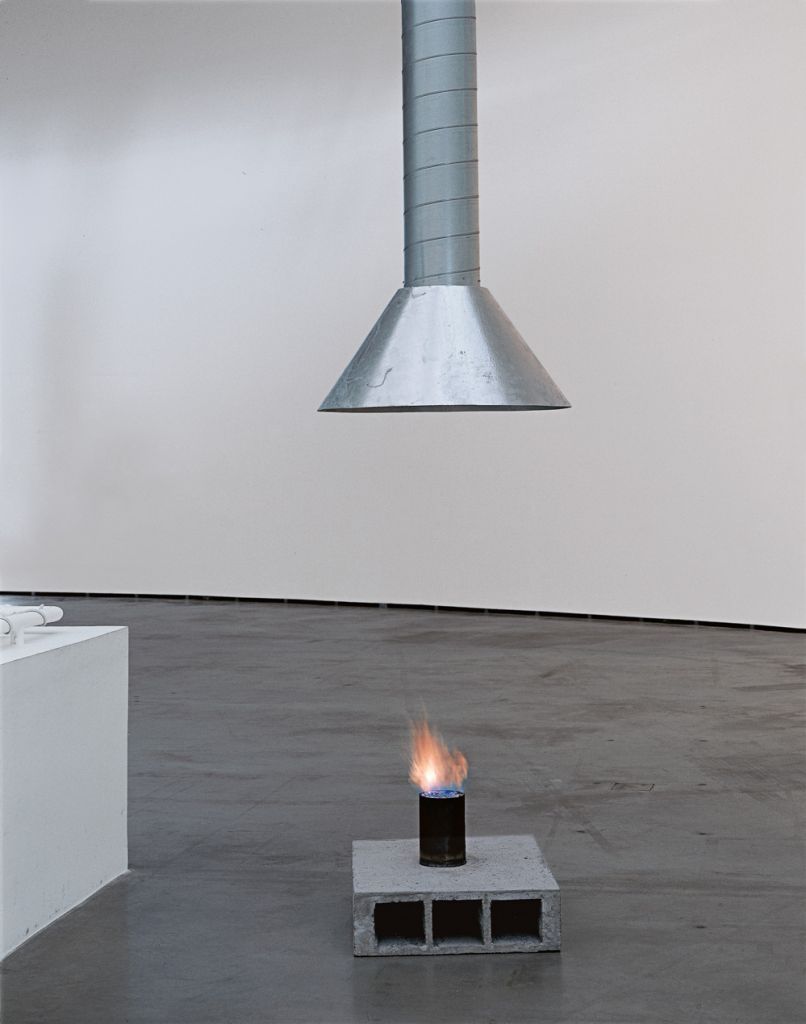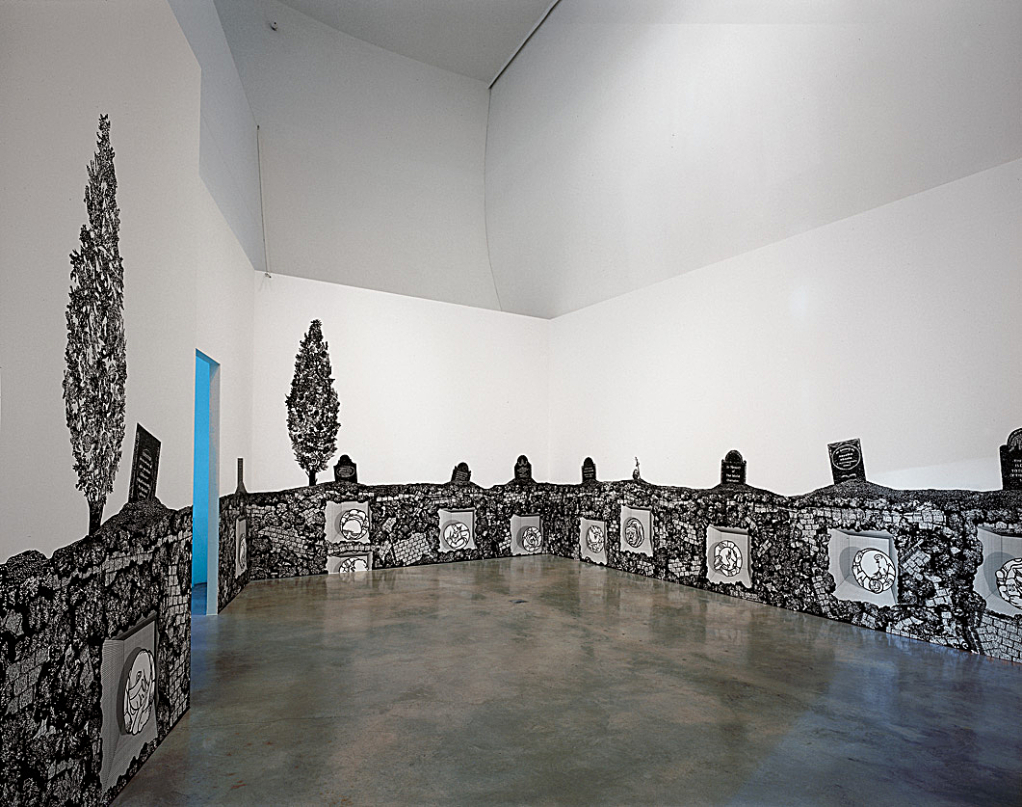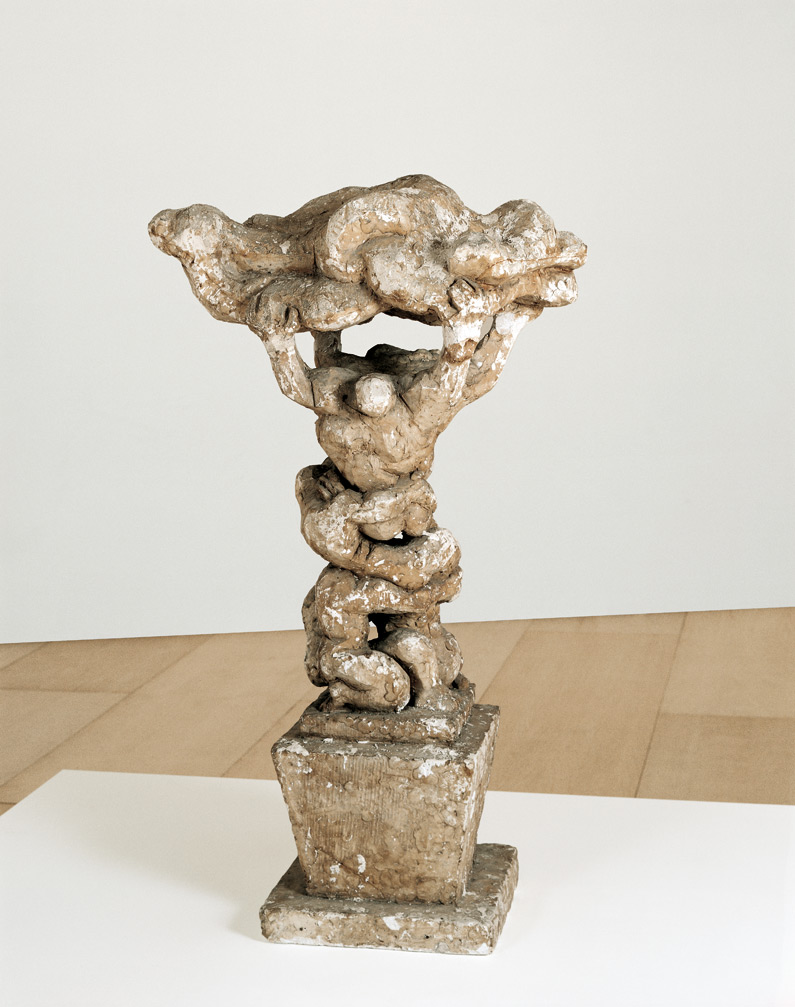Family Plot: Second Version
1993–95Wood, glass, rope, and photographsOverall dimensions variable
Txomin Badiola is considered, along with Pello Irazu, one of the key figures in the renewal of Basque and Spanish sculpture since the 1980s. This generation of artists dedicated themselves to rewriting the syntax of sculpture from a perspective rooted in the Modern tradition in order to break down the myths of history and recompose, in the present, some of its formal inventions. This action sought forms and discourses adapted to a moment of crisis in both representation and ornamentation.
Badiola builds strange sets where odd things happen, where meetings and misunderstandings take place, in a game of fabrications that offer the observer an immense space in which to create their meaning. All of these elements are included within the process of hybridization and mixing of language to which the artist has been committed in recent years.
Family Plot. Second Version (Complot de familia. Segunda versión) is a crucial work in the career of Txomin Badiola. In it, the strictly constructive elements so closely linked to his works converge with his interest in architecture, design, furnishings, and theater sets, along with the incorporation of references from cinema, television, photonovels, comics, etc. This second version alluded to in the first part of the title is the development of a previous version that was first presented at an exhibition held in New York in 1994.
The work was included in a 1995 exhibition in Madrid. The show integrated a series of fictions (multiple allegories) that fed off reality-strange challenges that Badiola defined as absurd or improbable situations embodied by real people who "end up creating a material and spatial environment." Halfway between theatrical set design and cinematographic innuendo, the artwork stretched the limits of sculpture while simultaneously taking a dive into the postmodern media landscape.
By joining together objects, constructions, and photographs of people that apparently have nothing to do with each other, but do feature strongly evocative qualities, the viewer feels driven to arrange them in time and space by means of an imagined action and, consequently, ends up completing the artwork. Thus, it is the viewer who gives meaning to this installation by unifying and connecting the different scenographic spaces, such as the objects and images located on and around it, so that everything becomes mutually justified.
Original title
Family Plot: Second Version
Date
1993–95
Medium/Materials
Wood, glass, rope, and photographs
Dimensions
Overall dimensions variable
Credit line
Guggenheim Bilbao Museoa






